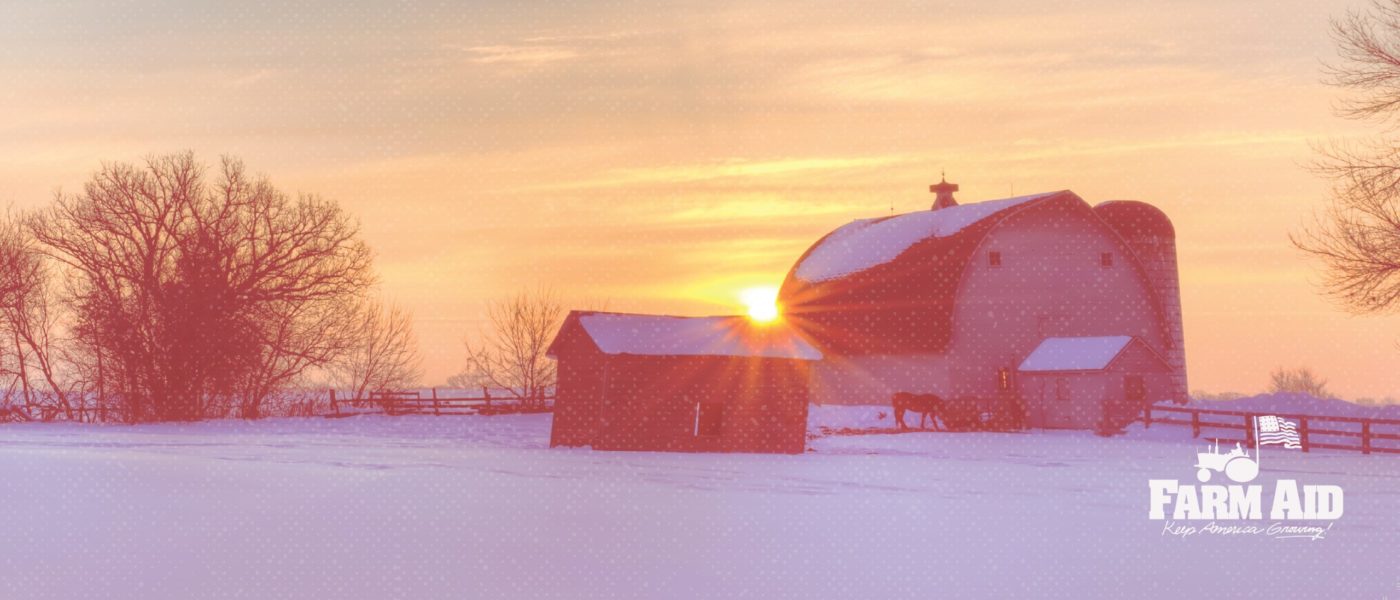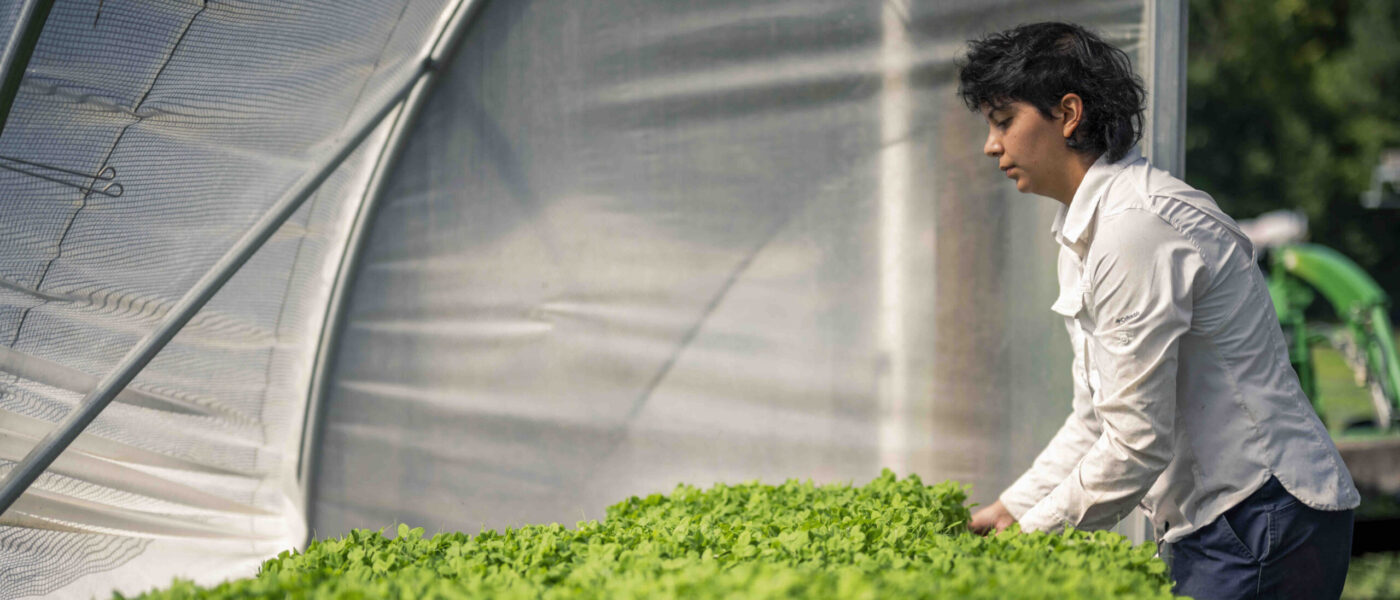The final five-year farm bill, an $867 billion package titled the Agricultural Improvement Act of 2018, passed Congress in a bipartisan show of support and was signed into law by President Trump on December 20.
Our biggest takeaway is this: in a time of farm crisis, this farm bill will not right the ship.
There’s a whole lot of good, bad and ugly in the bill, but our biggest takeaway is this: in a time of farm crisis, this farm bill will not right the ship. The future of family farm agriculture requires a dramatic shift in policy towards fair pricing, supply management programs, cracking down on corporate goliaths and accelerated attention to the climate crisis. By those standards, this farm bill fails. That said, farmers and ranchers cannot wait another day for the programs that ended when the last farm bill expired on September 30. The time is now to get them back up and running!
This whirlwind timeline robbed advocates of time for analysis or action (surely by design), but here are some of the highlights in our priority areas (a huge shout out to our friends at the National Sustainable Agriculture Coalition and Rural Coalition for helping us sift through the language). Check out Farm Aid’s Take in our Understanding the Farm Bill Hub for more details on how we got here.
Jump to a section:
Farmer Livelihoods
Local Food Systems & Healthy Food Access
Soil, Water & Climate
Equal Opportunity for All Farmers
Farmer Livelihoods
Since 2013, America’s farmers and ranchers have weathered a 50% drop in net farm income. The 1-800-FARM-AID hotline has had its busiest year yet, with more farmers calling us stressed, desperate and with a shrinking number of viable options for keeping their farms running.
The 2018 Farm Bill could have risen to the occasion by restoring commonsense measures like supply management (which would curb the overproduction that is causing the dairy crisis) and recommit to fair pricing policies that cover farmers’ cost of production, instead of using taxpayer money to compensate for extreme, costly and avoidable market volatility that puts farmers at risk of going out of business. But this bill won’t do that. Despite a few bright spots, when it comes to the core challenges facing the farm economy, the 2018 Farm Bill fails spectacularly, and in some cases, actively takes steps backward by giving even more taxpayer money to the wealthiest farm operations.
The bright spots:
- Farm and Ranch Stress Assistance Network: This important program intending to deal with the rising levels of stress and mental health concerns in farm country was actually authorized in the 2014 Farm Bill, but never received the funding it so desperately needed, and so never got going.The 2018 Farm Bill makes important improvements to the program – such as explicitly providing access to tribal communities – and authorizes up to $10 million each year until 2023. Upon passage of the bill, we will be working hard to make sure those dollars end up in the right hands – with the network of service providers we depend on to help farmers in crisis navigate their options and receive the support they deserve. Language in the bill also directs USDA and the Department of Health and Human Services to examine the problem of occupational stress among farmers and individuals who work in agriculture to develop a long-term strategy and response.
- Improvements to Whole Farm Revenue Protection: This essential crop insurance program allows coverage for farmers who run more diversified operations that previously could not access safety net programs. Improvements in this bill include flexibility around record-keeping methods and the ability to account for the impact of natural disasters in baseline assumptions that influence insurance coverage.
- Risk Management Goes Local: This farm bill directs USDA’s Risk Management Agency (RMA) to create a new Local Food Policy, helping farmers and ranchers plugged into local and regional food systems to have better access to insurance programs for their operations.
- Bye-bye King Amendment: The King Amendment would have preempted local and state laws around factory farms in particular, but more broadly on state protections for animals, the environment, food safety, and worker health and safety. This was removed from the final bill.
Luke-warm:
- The Dairy Margin Protection Program: MPP, a safety net program for dairy farmers now renamed Dairy Margin Coverage was overhauled to make it more useful to dairy farmers across the board but particularly to smaller-scale producers, (those with production of 5 million pounds or less per year—about equivalent to 240 cows). Premiums will be further reduced for farmers. This is a welcome improvement to a program that was all but useless or inaccessible for the many dairy farmers in crisis who have contacted us over the past year, but the 2018 Farm Bill still does not deliver the supply management policy that would deliver fair prices to farmers.
Unconscionable:
- Boondoggle for the big guys: The 2018 Farm Bill widens loopholes for wealthy mega-farms to exploit commodity and crop insurance subsidies, allowing nieces, nephews, and cousins who may have never worked on the farm to receive taxpayer-funded subsidies. This will continue to drive consolidation in the farm sector, allowing the biggest farms to keep growing and gobble up smaller and midsized operations that are so critical to the wellbeing of rural communities.
Local Food Systems & Healthy Food Access
Farm Aid celebrates the great power of food to connect people and grow strong communities, as well as the farmers and ranchers at the root of our food system. The 2008 Farm Bill ushered in a suite of programs that support the development of local and regional food systems, market diversification opportunities for farmers, healthy food access initiatives and other innovative programs that seize upon the great potential of food to bolster local economies, create jobs and deepen the connection between farmers and eaters.
Our hope for this Farm Bill was continued support for these programs and an expansion of access to healthy food for all Americans. By and large, this was a bright spot in the bill, which is no small feat given how hard our communities have had to fight to make the case that local food systems represent worthy investments in rural economies, public health, job creation and farmer livelihoods.
What we like:
- We love LAMP: A number of scrappy programs that spurred local and regional food systems over the last decade have consistently been fighting for funding. This farm bill combines two of our favorites – the Value-Added Producer Grant (VAPG) program and Farmers Market and Local Food Promotion Program (FMLFPP) – into a new program called the Local Agriculture Market Program (LAMP). The Farm Bill provides these programs with permanent funding and makes significant policy improvements.The 2018 Farm Bill also reauthorizes the Rural Energy for America Program (REAP), which will receive $50 million per year in mandatory funds in perpetuity, the National Sustainable Agriculture Information Service / Appropriate Technology Transfer for Rural America (ATTRA), Business and Industry Loan Guarantees Local & Regional Food Enterprise Set-aside, an expands the Healthy Food Financing Initiative.
- Rural Matters: The 2018 Farm Bill overturns the outrageous decision made last year by Secretary of Agriculture Sonny Perdue to eliminate the position of an Undersecretary for Rural Development. The bill now mandates this position’s existence.
- Urban Matters, too: The 2018 Farm Bill establishes a new “Office of Urban Agriculture and Innovative Forms of Production” with $25 million per year in appropriations authority, a 15-member advisory committee and competitive grants authority. It instructs the creation of 10 pilot Urban and Suburban County Committees and creates a community compost and reducing food waste pilot. The bill also includes $10 million annually in mandatory funding for research grants in urban agriculture.
- ‘Let food be thy medicine’: This bill reauthorizes the Food Insecurity Nutrition Incentives Program and renamed it the Gus Schumacher Nutrition Incentive Program (named after a hero of ours who worked tirelessly to ensure that everyone has access to good food). The program will receive $250 million over 5 years and includes a produce prescription program.
- A better SNAP. The bill extends funding for the Supplemental Nutrition Assistance Program (SNAP, formerly called ‘food stamps’) without the rigid and bureaucratic work requirements initially placed in the House version of the bill. Those provisions would have deepened hunger and poverty for vulnerable Americans, including children and families. The bill also instructs USDA to allow farmers markets to operate an individual EBT device for accepting SNAP benefits at more than one location.
Disappointing:
- Farm to School: The 2018 Farm Bill fails to provide additional mandatory funding for the USDA Farm to School Grant Program and does not provide for the regulatory flexibility that would allow school food authorities to procure local and regional food and farm products.
- Where’s the money? This bill reduces mandatory funding for the Community Food Projects grant program by $4 million and does not provide mandatory funding for the Food Safety Outreach Program.
Soil, Water & Climate
For the better part of a century, farm bills have acknowledged the crucial role that government dollars can play in developing conservation programs that steward our natural resources. Funding for these programs has expanded over the last three decades, as more farmers seek to learn on-farm conservation skills, invest in the long-term health of our soil, water and climate, and build a more resilient agricultural system in the face of climate change.
Our hope was for a farm bill that empowers farmers and ranchers to steward our natural resources and effectively mitigate and adapt to climate change by investing in the long-term health of our soil, air and water and maintaining full funding for all conservation programs; expanding program access to serve farmers of all types; and removing loopholes in the EQIP program that subsidize factory farms. Unfortunately, while there are important measures in this farm bill, it falls far too short in advancing these goals.
The Good:
- Organic: There are important improvements for certified organic growers in this farm bill, such as increases in the Organic Initiative payment cap within the Environmental Quality Incentives Program (EQIP), a new organic allocation within the Conservation Stewardship Program (CSP) – the largest federal conservation program— and $5 million in mandatory funding for the collection of organic production data.The bill also increases funding for the Organic Agriculture Research and Extension Initiative (OREI) to $50 million a year in permanent funding by 2023, with a total of $395 million in funding over ten years. Finally, the bill included $24 million in mandatory funding for National Organic Certification Cost Share from 2019-2023, although this was far less than advocates had requested.
- Soil Health: The bill increases payments for cover crops, crop rotations and advanced grazing management within the CSP, and authorizes payment for comprehensive conservation planning. The bill also includes new research priorities around soil health.
- Seeds for the future: This bill authorizes a National Genetics Resources Program, adopts a National Strategic Germplasm and Cultivar Collection Assessment and Utilization Plan, and makes other important policy around public, locally- and regionally-adapted seed varieties that can help farmers navigate a changing climate.
Mixed bag:
- Hand outs for factory farms: While this bill decreases livestock set-asides within EQIP that were being funneled to the factory farm industry, it does not remove these loopholes entirely and does not include any of the much-needed reforms that would limit taxpayer dollars being used to subsidize factory farms.
- No cuts: The fact that there were no cuts in overall funding in the Conservation Title is a huge win, since the first House version of the bill slashed these programs and removed the CSP altogether. That said, this bill failed to restore $6 billion in cuts to the title made in the 2014 Farm Bill and set us up for a challenging future because…
…the oh-so-ugly:
- Borrowing from the future: You may have to read the fine print to realize that this Farm Bill establishes cuts over the long-term for CSP past the year 2023, amounting to over $5 billion in advance cuts to the CSP and EQIP for the next farm bill.
- Research shortfalls: This farm bill did not include important research priorities on climate change and provided no baseline funding for plant breeding research.
Equal Opportunity for All Farmers
For too long, the lion’s share of federal farm bill dollars has gone to a narrow segment of farmers and farm types. Farmers of color and female farmers have experienced discrimination when seeking access to credit, conservation and other farm programs. In far too many cases, this discrimination has led to farm families going out of business and losing their land.
Our hope was for a farm bill that would build upon past progress to ensure equal opportunity for farmers of all kinds and create a truly level playing field for anyone interested in becoming a farmer. There are some notable achievements in this bill.
What we like:
-
- Hello, FOTO! The final farm bill combines the Beginning Farmer and Rancher Development Program (BFRDP) and Outreach and Assistance for Socially Disadvantaged and Veteran Farmers and Ranchers Program (also known as “Section 2501”) into the new Farming Opportunities Training and Outreach (FOTO) program. The improved program has permanent funding of $50 million annually, shared equally between the two programs.
- Fairer Safety Net: Throughout the Farm Bill, there are important improvements to programs in the farm safety net that make sure farmers of color are not left behind. For example, the bill mandates that there is a report every 3 years on Underserved Producers with recommendations for improving participation in insurance programs. And it includes equitable relief for producers who received incorrect servicing by the USDA when applying for direct loans.
- Fairness for Heirs Property. Heirs’ property refers to land that passed down to multiple descendants without the presence of a will or estate plan. It leaves the heirs without clear title to the land, which prevents farmers who are part of an heirs’ property to receive FSA loans. This bill ensures that these farmers, often African-American farmers and farmers of color operating on land with undivided interests, can finally access USDA programs that enable them to protect the soil and water, and continue to operate viable farms that feed their communities.
- Historically Black Colleges and Universities: The bill includes $40 million in mandatory funding for scholarships for the 1890 land-grant institutions – agricultural colleges created primarily to serve African American students who could not access to higher education due to segregation.
- Legalizes Industrial Hemp by removing it from the controlled substances list and allowing tribes, states, and territories to establish regulatory structures within their boundaries that allow farmers and ranchers to produce a high-value cash crop while retaining federal farm program benefits that were previously not allowed.
Mixed bag:
- Set asides: This bill maintains, but fails to increase, allocated dollars set aside for socially disadvantaged and beginning farmers in major conservation programs (CSP and EQIP).
- No money, more problems: The bill removes mandatory funding for the Rural Microentrepreneur Assistance Program, an important program for farmers and ranchers of all kinds. It also does not provide mandatory funding for Individual Development Accounts (IDAs), which are important for beginning farmers.



